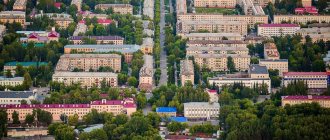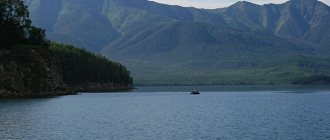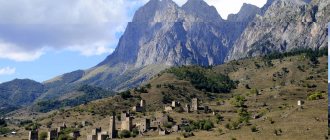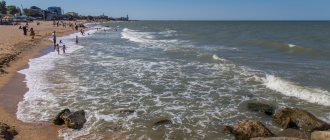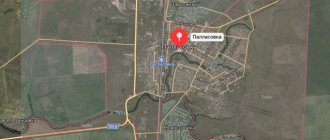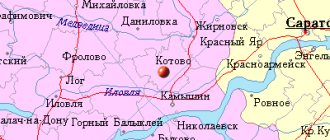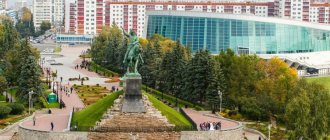Voronezh is one of the central cities of the European part of the Russian Federation, having the status of the administrative center of the Voronezh region. The settlement, located more than 500 kilometers from the capital of Russia, in 2013 exceeded the “million” population figure. Voronezh is considered the real homeland of our country's regular navy, as well as the base for airborne divisions.
On the territory of the city, which bears the title of “City of Military Glory,” in addition to numerous architectural monuments, there are many economic facilities, industrial enterprises and administrative buildings. Developed infrastructure contributes to the growth of residents’ well-being and also affects the population: in recent years, the Voronezh region has been under the close attention of thousands of migrants. In this article we will talk about the population of Voronezh, and also take a closer look at some demographic factors from official statistics.
Current statistics
According to data established by the unified interdepartmental information and statistical system, the population of Voronezh in 2022 reached 1,058,261 people. The natural increase in the city's population has been observed since 2010: in 2003 the figure was 847,620 people, and by 2022 it increased almost 1.2 times - to 1,039,801 people. In 2013, Voronezh received the title of a millionaire city, although, de facto, the regional center reached the population figure of one million inhabitants by the end of 2012.
Voronezh is one of the 20 largest cities in the Russian Federation, occupying 13th place on the list, just above Perm. It is worth saying that there is a constant “demographic struggle” between these two regional centers, which Voronezh won in 2019, albeit with a minimal margin of 173 people.
Working population
Official statistics indicate that the working population of Voronezh in 2022 is approximately 65% of the total urban population, which is a fairly good figure, because the remaining 35% is easily divided between people of retirement age and children. Unemployment is only 1-3%, so the city can be considered exemplary for the entire state.
Most of the working population works in industry, while the rest of the people work in private firms and large industry. Additionally, it must be said that the city is socially developed, so it has a large number of museums, cinemas, shopping centers and restaurants, so a fairly large percentage of people are employed in the service sector (but not only indigenous residents work here, but also visitors).
In conclusion, an interesting fact about Voronezh - the speech of the indigenous inhabitants can be distinguished by the fricative pronunciation of the sound [g] with an additional sound [x], which is due to the direct influence of the Ukrainian language.
Data by year
Data on the current number of residents of Russia’s major demographic centers is publicly available. You can view such information on the official website of the Rosstat service. Also, data on the population of a particular city is indicated on the portal of the Unified Interdepartmental Information and Statistical System (EMISS). For your convenience, we considered data from both verified sources and, after a little analysis, provided the averages in the following table. The list shows the number of residents in recent years.
| Number of inhabitants (people) | Years |
| 1 023 570 | 2015 |
| 1 032 895 | 2016 |
| 1 039 801 | 2017 |
| 1 047 549 | 2018 |
| 1 054 111 | 2019 |
| 1 058 261 | 2020 |
According to data established as of January 1, 2022, Voronezh is in 13th place in terms of population among all cities of the Russian Federation. Fourteenth place is occupied by Perm (1,055,397 people), and twelfth place by Krasnoyarsk (1,093,771 people). The first and second places are held by two capitals - Moscow and St. Petersburg, 12,678,079 and 5,398,064 people, respectively.
About the city
Voronezh is the largest city, one of the regional centers of the Russian Federation. The settlement, built along the banks of the river and reservoir of the same name, has a special provincial charm. Despite the fact that the region is located away from traditional tourist routes, Voronezh still has something to show its guests.
A special part of the city’s history is dedicated to the times of the Great Patriotic War. Today it is a regional one, and on its territory you can find dozens of architectural monuments indicating that difficult time for our country. Militarist objects also include buildings operating in the shipbuilding industry. Even Peter the Great called the city the center of Russian shipbuilding - the city is home to most of our country's regular fleet.
In addition to industrial and economic facilities, the administrative center is full of all kinds of parks, restaurants, cafeterias and hotels. Tourists and residents love to visit aquariums, circuses, zoos, and also pay some attention to ancient temples and monasteries.
Urban district of Voronezh
Voronezh is the administrative center of the Voronezh region of the Russian Federation, a large industrial and cultural center, and a railway junction. Located on both banks of the river. Voronezh, left tributary of the river. Don. Population – more than 1 million people, area – 597 sq. km. Voronezh was first mentioned in chronicles in 1177.
The fortress on the site of modern Voronezh, founded by decree of Tsar Fyodor Ioannovich in 1585, was completed in 1586 under the leadership of governor S.F. Saburov, heads V.G. Birkin and I.G. Myasnoy (Sudakov) for protection from the attacks of the Crimean and Nogai Tatars and from the invasion of Polish-Lithuanian troops. Therefore, 1586 is considered the date of the emergence of Voronezh.
The fortress was located on the high and steep right bank of the river. Voronezh. In 1590, Voronezh was burned during a raid by the Cherkasy. In 1594 it was rebuilt almost in the same place. During the Time of Troubles, the Voronezh garrison blocked the path of the troops of Ataman Ivan Zarutsky, a de facto ally of the Polish interventionists. In 1613, near the walls of Voronezh, the ataman’s troops were defeated and fled to the steppes of the southern Don. In 1615, the city with a trade and craft settlement had a population of about 7 thousand people. In the first decades of its existence, Voronezh became a reliable bastion, covering the civilian population of the region and ensuring its economic development. In the middle of the 17th century, in connection with the construction of the Belgorod outpost, Voronezh turned into one of its fortresses. In 1658, Voronezh was transferred to military subordination to the voivode of the Belgorod category. Fearing the appearance of F.T. Razin’s troops, governor B.G. Bukhvostov strengthened the fortress walls in 1670.
In 1682, Voronezh became the center of the diocese, and the first bishop, Mitrofan (later canonized), arrived in the city. By the 1690s. The wooden fortress was completely dilapidated and, due to the end of the military threat, could no longer be repaired. In the fall of 1696, after the unsuccessful 1st Azov campaign, Peter I decided to create a navy and chose Voronezh as the place for its construction. Peter I visited Voronezh 13 times in 1696–1722 and spent a total of more than 500 days here. Members of the royal family, foreign diplomats, and associates of the tsar (A.D. Menshikov, F.M. Apraksin, K.I. Kruys, F. Lefort) also came to Voronezh. During the stay of Peter I, Voronezh actually turned into the unofficial capital of Russia. The population of Voronezh during the shipbuilding period increased from 10 to 50 thousand people. A shipyard was built on the banks of the Voronezh River. In 1696–1709, dozens of large ships were built here (“Principium”, “Apostle Peter”, “Apostle Paul”, “Goto Predestination”, etc.), as well as galleys, fire ships, etc. Foreign and Russian shipwrights (R. Kozents, D. Nay, F.M. Sklyaev, F. Palchikov, etc.), the so-called German settlement was formed. In 1698, the Admiralty and a workshop were built on the island formed by the branches of the Voronezh River. In 1701 the city was transferred to the administration of the Admiralty Prikaz. The fleet built in Voronezh took part in the capture of the Turkish fortress of Azov (July 1696), and participated in the Kerch campaign in 1699. The organizational foundations for the subsequent construction of the fleet in the Baltic and Black Seas were laid in Voronezh. The first Admiralty in Russia was created here. In 1703, the first school for training naval officers was opened in the Voronezh region.
In 1709 Voronezh became part of the Azov province. In 1711 its center moved from Azov to Tambov, and in November 1715 it was transferred to Voronezh. Since 1725, the Azov province began to be called Voronezh. In 1745, the first theological educational institution, a seminary, opened (operated until 1918, revived in 1993). In 1774, after another major fire, Catherine II approved the master plan for the development of Voronezh on a regular basis (author - architect I.E. Starov), which was in effect for a century and a half. In the 2nd half of the 18th - 1st half of the 19th century. Voronezh was one of the centers of the Russian cloth industry, supplying the treasury with up to 25 percent of uniform cloth. In 1779-1796 Voronezh was the center of the governorship, which included two provinces.
In 1781, the coat of arms of Voronezh was approved: “The shield is divided in two, in the upper part of it there is a double-headed black eagle in a golden field, and in the lower part in a red field there is a vessel overturned on a slope, from which the Voronezh River flows.” In 1785, a “Topographic Description of the Voronezh Viceroyalty” was compiled, containing a detailed description of Voronezh. At the same time, a city duma appeared in Voronezh, the city began to be governed by elected councilors and the city mayor. In 1785, a secular educational institution was created - a public school, transformed in 1809 into a provincial gymnasium and a district school. The military glory of Voronezh was increased during the Napoleonic wars. During the Patriotic War of 1812, infantry and cavalry regiments were recruited in the Voronezh province and joined the active army; a people's militia was formed under the command of Major General V.A. Rusanova. Many active participants in the War of 1812 are associated with Voronezh: brothers A.N. and S.N. Marina, brothers I.M. and M.M. Petrovs.
In 1818 and 1820, Emperor Alexander I visited Voronezh. Throughout the 19th and early 20th centuries. All subsequent Russian emperors visited the city. In 1832 the relics of St. Mitrophan were opened for veneration. On this occasion, Emperor Nicholas I came to the city. In 1845, with funds donated by N.D. Chertkov, opened the Mikhailovsky Cadet Corps (among its graduates are V.A. Antonov-Ovseenko, A.E. Gutor, A.M. Kaledin, A.N. Lodygin, S.I. Mosin (a rifle of his design was in service with the Russians armies up to the Great Patriotic War), G.V. Plekhanov, S.G. Ulagai, etc.). In 1860, a monument to Peter I was opened (sculptor A.E. Schwartz, architect A.A. Cui). In 1868, a railway connection with Moscow opened, in 1871 - with Rostov-on-Don, in 1894 - with Kursk. Industrial enterprises appeared: railway workshops (1868), agricultural machinery plant V.G. Stoll (1869), mechanical and iron foundry plant of Ivanov and Veretennikov (1899), in 1915 the machine-building plant was evacuated to Voronezh from Riga. In 1879, a congress of the populist organization “Land and Freedom” was held illegally in Voronezh. At the turn of the 19th–20th centuries. The revolutionary movement is intensifying in Voronezh. In 1905, the Delegates' Assembly arose, leading the strike movement.
In 1913, the city's first higher educational institution, the Agricultural Institute, was founded. During the First World War, reserve and reserve military units were formed in Voronezh; defense enterprises were evacuated here from the western regions of the Russian Empire. On October 30, 1917, a military coup took place in Voronezh and the Bolsheviks came to power. In October 1919, for three weeks, Voronezh was in the hands of the White Cossack corps of General A.G. Skin. In 1928, Voronezh became the center of the Central Black Earth Region. And after its liquidation in 1934, it remained the center of the region of the same name. In the 1930s Voronezh began to be located on both banks of the river. On the left bank in 1932, two large factories were built - an aviation one, which before the Great Patriotic War launched the production of IL-2 and SK-2 attack aircraft named after S.M. Kirov, which produced rubber according to the method of Academician S.V. Lebedeva. In 1933, a large city power station was created and supplied current. One of the most important industrial and scientific complexes in the USSR was formed in the city. Excavator named after them became large factories. Comintern, press machines named after. Kalinin, mechanical engineering named after. Lenin. The capacity of the aircraft plant was rapidly increased, and it began serial production of aircraft of the latest designs. Many types of aircraft produced in Voronezh began to enter the USSR Air Force several years before the start of the Great Patriotic War.
On the day the war began, the Voronezh region was declared under martial law. Enterprises began mass production of military products. Plant named after The Comintern began producing rocket launchers (Katyushas). In the summer of 1941, a people's militia division was formed in Voronezh; in August 1941 - a volunteer communist regiment (more than 3 thousand people), which was included in the 100th (then 1st Guards) division. On October 22, 1941, the City Defense Committee was formed, headed by the secretary of the regional party committee V.D. Nikitin (at the end of the year he was replaced by V.I. Tishchenko). In October-November 1941, most large enterprises were evacuated to the east. In November 1941 - May 1942, the headquarters of the Southwestern Front and the Main Command of the Southwestern Direction were located in Voronezh. On November 7, 1941, a military parade took place, which was hosted by Marshal S.K. Tymoshenko. Due to the successful counter-offensive of Soviet troops near Moscow, the front line stabilized at 120 km. west of Voronezh.
The situation became sharply more complicated in June 1942, when enemy air raids on Voronezh intensified. The capture of Voronezh by Hoth's 4th Panzer Army was part of the summer offensive of the German Army Group South towards Stalingrad and the Caucasus under Operation Blau. From 06/28 to 07/03/1942, having broken through the defenses at the junction of the 13th and 40th armies of the Bryansk Front, units of the 24th Panzer Division and the mechanized division “Great Germany” reached the Don River and 07/04/05/1942 created bridgeheads to the west and south -west of Voronezh. On July 6, tanks and motorized infantry of the 4th German Tank Army broke into the city and by the end of July 9 captured its right bank part. But already on July 10, the northeastern outskirts of Voronezh were recaptured from the enemy. During the defense of Voronezh in July 1942, its defenders (soldiers of the garrison, 3rd Air Defense Division, 232nd Rifle Division, 18th Tank Corps, individual artillery regiments and units of the 2nd Air Army) stopped the enemy, defended the left bank and 4- 5 days delayed the breakthrough of the German army group to Stalingrad, thwarting the plan to encircle the Southwestern Front in the Middle Don. On July 07, 1942, the Voronezh Front was created, whose troops participated in a number of defensive and offensive operations, including the defense and liberation of Voronezh. On July 12, 1942, the first private offensive of the Voronezh Front troops began. On July 14, the village of Podgornoye, the “northern gate” of Voronezh, was temporarily liberated. Attacks by Soviet troops in August–September 1942 led to the creation and expansion of the Chizhov bridgehead on the right bank of the Voronezh River. In the battles for Voronezh, the armies and fronts were commanded by N.F. Vatutin, K.K. Rokossovsky, I.D. Chernyakhovsky, R.Ya. Malinovsky, F.I. Golikov, M.M. Popov, S.A. Krasovsky and other military leaders. In October - December 1942, local positional battles took place near Voronezh. In the Voronezh area, up to 10 divisions of the 2nd German Army were pinned down. 01/25/1943 during the Voronezh-Kastornensky operation, troops of the 60th Army of General I.D. Chernyakhovsky was completely liberated from Voronezh.
For 212 days, the front line passed through Voronezh. The active defense of the city helped to survive and defeat Stalingrad, pinning down up to a third of the forces of Army Group B. The Battle of Voronezh marked the beginning of the disruption of the summer offensive of German troops in 1942. The civilian population from Voronezh was driven deep into the occupied territory. About 500 people shot in Peschany Log on the southwestern outskirts of the city. The city was destroyed by more than 90%. More than 32 thousand people died during the war. – natives of Voronezh, 13 natives of Voronezh became Heroes of the Soviet Union, 3 – full holders of the Order of Glory.
In November 1945, the Council of People's Commissars of the USSR adopted a resolution on the restoration of 15 oldest Russian cities, including Voronezh. At the end of the 1940s. the restoration of industrial enterprises was completed by the mid-1950s. – residential and public buildings. 02/01/1949 Sov. Min. The RSFSR adopted the Resolution “On measures to assist in the restoration of the city of Voronezh.” In 1945-1946 and 1949-1960, Voronezh was the center of the military district. A tire plant came into operation in 1950, and a heavy mechanical press plant came into operation in 1953. In 1956, the production of Record televisions was launched, and since 1982 - color televisions. New mechanical engineering and electronics industry enterprises were opened: a semiconductor device plant (1959), a machine tool plant (1960), a plant for aluminum building structures (1973), and a research institute for household video equipment (1986). In 1972, a new airport came into operation, and in the spring of that year the reservoir was filled. Artillery Marshal G.F. was born in Voronezh. Odintsov. Voronezh was awarded the Order of the Patriotic War, 1st degree (1975), Lenin (1986).
02/16/2008 By decree of the President of the Russian Federation, Voronezh was awarded the title “City of Military Glory”. There are several dozen places in the city associated with the memory of military history: mass graves at the Monument of Glory, in the Voronezh Central Park, the ruins of the Rotunda regional hospital. In 1975, a memorial complex was opened on the square. Victory with the Tomb of the Unknown Soldier and the Eternal Flame, in 1985 - a memorial on the Chizhovsky bridgehead. In 1993, the monument to I.D. was moved from Vilnius to Voronezh. Chernyakhovsky. In 2000, the Diorama Museum was opened, in front of which there are samples of military equipment. There, in 2007, a memorial dedicated to the Heroes of the Soviet Union and Heroes of Russia - natives of Voronezh - was opened; in 2010, a memorial stele “Voronezh - the city of military glory” was installed. In Victory Park, in the year of the 80th anniversary of the Airborne Forces, a monument “Voronezh - the birthplace of the Airborne Forces” was erected.
Many natives of Voronezh glorified the city with their scientific, cultural, and sports achievements, inscribing their names in golden letters in the chronicle of the Fatherland. These are writers A.V. Koltsov, I.S. Nikitin, I.A. Bunin, A.P. Platonov, S.Ya. Marshak, A.V. Zhigulin, cosmonaut K.P. Feoktistov, artist N.N. Ge, composer K.I. Massalitinov, artist G.P. Menglet, athlete D.I. Sautin et al.
The modern city is developing dynamically and looks confidently into the future.
National composition
The ethnic composition of the Voronezh region is extremely diverse. This state of affairs is established due to factors of the historical settlement of the earth, as well as as a result of modern migration movements. Voronezh region is a multinational region. This statement can be supported by the statistics provided.
| Nationality | Number (persons) |
| Russians | 2 239 524 |
| Ukrainians | 73 716 |
| Persons who did not indicate nationality | 11 857 |
| Armenians | 8 813 |
| Belarusians | 5 013 |
| Tatars | 3 486 |
Please note: the overall population figure is not comparable to the data shown in this table, as not all city residents participated in the survey regarding their ethnicity. The census was carried out using modern information, statistical and technological methods.
Gender and age
The total population of the Voronezh region in 2022 exceeded 2.3 million people, and 1.5 million consider themselves to be citizens - residents of the regional center. At the same time, for every 100 girls born, on average there are 108 boys born.
Among city residents, the percentage of the female population is higher compared to the same indicator for citizens living in rural areas (54.3% versus 53.1%). By mid-2022, there will be almost 1,200 women for every 1,000 men. A similar trend is observed throughout Russia; the demographic table with a gender division repeats similar structures for other large cities in the country.
Data for the Voronezh region
Natural increase
Natural population growth is a key factor in demographic statistics, indicating the excess of birth rates over deaths. Simply put, it is the difference between the number of people born and died over a certain time period. Natural population growth intensified at the beginning of 2010. Since then, the city has been growing steadily, gaining new positions in the ranking of the most densely populated centers in the country.
However, upon closer examination, it turns out that the increase in population figures depends solely on migration processes. In 2022, the decline in the number of residents of Voronezh increased by 10.9%, reaching the level of 2015. Thus, the rate of population decline in Voronezh in 2022 is 11.75 thousand people. The migration increase over the same period was 10.1 thousand.
Voronezh region
Leninsky district
The central location, the lack of land free from development and the high population density are the key differences between the Leninsky district and the rest. The Voronezh-Don watershed, running approximately along the streets of Ostrogozhskaya, Krasnoznamenaya, Koltsovskaya, divides the area into eastern steep and western flat parts. The eastern part, which is a typical steep right bank, is characterized by an abundance of gullies that shaped the character of the area's development. The largest beams can be named by the streets running along their bottom: st. Bolshaya Streletskaya, st. People's militias - Jasminny lane, st. Onezhskaya. The western flat part, unlike the eastern part, has slight elevation differences. It is worth noting only the beam in the southwestern part, which covers Journalists Street and Lane. Korpusnaya, as well as Artillery and Karelian streets.
The nature of the development of the Leninsky district was largely influenced by the nature of the area. For the most part, all the beams are occupied by the private sector, and the flat areas are built up with multi-story buildings. The main transport arteries run either along the interbeam ridges or perpendicular to the beams.
Migration
The Voronezh region is a territory that has traditionally been under close attention from legal and illegal migrants. Voronezh is one of the 15 most attractive cities for migration in post-Soviet Russia. The overall increase in the number of migrants is ensured by indicators within the country (about 20%) and the factor of international migration (the remaining 80% of the total number of migrants). According to statistics, the region successfully competes for the density of migration flows with Moscow, as well as the Lipetsk and Rostov regions. A large percentage of migration comes from Ukraine, Uzbekistan and Kazakhstan.
Data for the Voronezh region
Positive migration indicators provide closure to the problem associated with a stable decline in the number of residents. Although natural growth rates are growing, they are not in a positive phase, representing a figure of minus 10.9%. In 2020, Voronezh experienced a loss of 11,075 people, while migration flows provide an increase of at least 10,000 people.
Population of Voronezh districts
There are 6 urban districts in Voronezh that do not have the rights of municipalities in accordance with the city charter. The executive and administrative authorities are district councils. Heads of district administrations are appointed by the head of the city in agreement with the city duma. Two densely populated districts (Zheleznodorozhny and Levoberezhny) are located on the left bank of the Voronezh reservoir, the rest are on the opposite (Leninsky, Kominternovsky, Sovetsky, Central).
The largest district of Voronezh in terms of population is Kominternovsky. It is home to 273,243 people or about 27% of the total population. The second largest district is the Left Bank district, which is home to 170,300 (19%) people.
The Sovetsky district is home to 143,100 (16%) residents. The next district of Voronezh in terms of population is Leninsky with 134,000 (15%) residents. It is almost completely built up, the number of residents is practically not growing. 131,000 (14%) people live in the Zheleznodorozhny district, the largest by area. The smallest district of Voronezh in terms of population is home to 82,000 (8%).
Forecast
Various services and private companies are engaged in demographic forecasting on the territory of the Russian Federation. Almost all institutions clearly point to the following picture, which will most likely be observed in Voronezh in the coming years:
- A gradual increase in the numbers of natural population growth, until similar “minus” indicators are completely leveled out.
- Stable demographic growth, ensured by natural growth and domestic and international migration.
- Promotion in the list of the largest cities in Russia from 13th place to 12th and higher.
Favorable forecasts are ensured by many factors, including the growth of infrastructure, the rise of the economic and industrial sectors.
Description of the region
Voronezh is located at the confluence of the Don Plain and the Central Russian Upland. A significant part of the area is occupied by forest-steppe. Two large rivers flow through the city - Voronezh and Don.
Geographic time zone – UTC +3:00. By international standards, the region is located in the MSK time zone, that is, on a par with Moscow. The climate in the region is moderate. Winters are mostly frosty, but not as cold as in the capital. Snow cover is stable throughout half of the season. Frosts often occur at the beginning of November. In December, thaws occur quite often, which are accompanied by rain. The average temperature in winter is about -10 degrees. As for the summer season, it is hot and dry. The rainy season begins only in autumn. In spring there is a long period of ice drift. Thanks to the mild climate, the city is decorated with dozens of parks and squares. The local arboretum is popular among residents and tourists.
